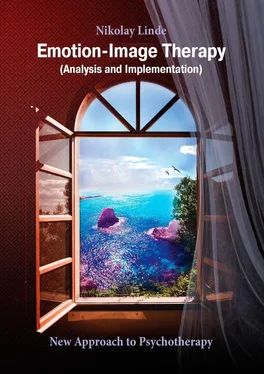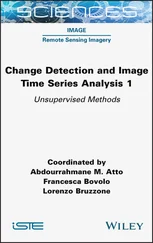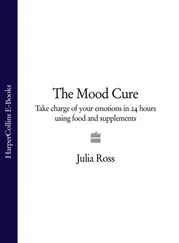Nikolay Linde - Emotion-Image Therapy. Analysis and Implementation
Здесь есть возможность читать онлайн «Nikolay Linde - Emotion-Image Therapy. Analysis and Implementation» — ознакомительный отрывок электронной книги совершенно бесплатно, а после прочтения отрывка купить полную версию. В некоторых случаях можно слушать аудио, скачать через торрент в формате fb2 и присутствует краткое содержание. ISBN: , Жанр: Здоровье, psy_generic, на английском языке. Описание произведения, (предисловие) а так же отзывы посетителей доступны на портале библиотеки ЛибКат.
- Название:Emotion-Image Therapy. Analysis and Implementation
- Автор:
- Жанр:
- Год:неизвестен
- ISBN:9785449698827
- Рейтинг книги:5 / 5. Голосов: 1
-
Избранное:Добавить в избранное
- Отзывы:
-
Ваша оценка:
- 100
- 1
- 2
- 3
- 4
- 5
Emotion-Image Therapy. Analysis and Implementation: краткое содержание, описание и аннотация
Предлагаем к чтению аннотацию, описание, краткое содержание или предисловие (зависит от того, что написал сам автор книги «Emotion-Image Therapy. Analysis and Implementation»). Если вы не нашли необходимую информацию о книге — напишите в комментариях, мы постараемся отыскать её.
Emotion-Image Therapy. Analysis and Implementation — читать онлайн ознакомительный отрывок
Ниже представлен текст книги, разбитый по страницам. Система сохранения места последней прочитанной страницы, позволяет с удобством читать онлайн бесплатно книгу «Emotion-Image Therapy. Analysis and Implementation», без необходимости каждый раз заново искать на чём Вы остановились. Поставьте закладку, и сможете в любой момент перейти на страницу, на которой закончили чтение.
Интервал:
Закладка:
3. The level of understanding. Deeper and more generalized is the level of understanding and meaning. When a person understands something that he couldn’t understand before, he has the feeling of insight, of discovery. Through the process of understanding a person discovers a new meaning of phenomena which opens up for him new opportunities. The meaning can be expressed by different thoughts both verbally and not verbally, for instance, by images.
This is how a teacher can make sure that his student understands properly what has been explained, asking the student to say the same thing but in his own words or to do some unusual task on the ground of what he understood. One and the same meaning can be expressed by different phrases, in different languages, for example, in Russian, in Finnish, in German, in Chinese or it can be expressed by gestures or images. The meaning itself doesn’t have its own universal language, it doesn’t have its own form of expression and yet it can find various forms of expression.
A Chinese fable says about it in the following way: “Words are only traps for the meaning. When a beast is captured the trap is forgotten. Where can I find a man who forgot about words in order to talk to him?”
Our psyche prefers to talk to us in the language of images. Almost all discoveries were made when a person became relaxed and switched off his familiar fussing around thoughts, then his psyche sleeping or meditating gave rise to images whose meaning solved the task. This is how Archimedes relaxed in the bath and discovered his famous law. He was so excited that he jumped out if the bath and was running about Syracuse crying: “Evrica!” [which means “I’ve found!”]. Mendeleev saw his periodic table in his dream as a solitaire. And Bach saw his fugues in his dream as Gothic cathedrals.
They say that the inventor of sewing machine Elias Howe spent two years on his research, got broke but failed to achieve the desirable result. And once nearly in a complete despair he fell asleep in his laboratory on his drawings. He had a dream that he was somewhere in Africa, he was caught by cannibal savages who tied up his hands and legs, pushed him into a tub of water, put a lid on and began to boil it. Hot water made the ropes get loose, he freed his hands and legs pulled away the lid and began to get out of the tub. But the cannibals came running at once and started to push him back into the tub with spears, he screamed with terror and woke up. “Their spears were kind of unusual, – he thought in surprise, – they had holes in the spikes!” And he invented a needle for sewing machines! The subconscious coded the solution in images but he was lucky to decode it. We also ask the subconscious in terms of images and then interpret its answer!
Insight is an ecstatic reaction to the opened truth. In place of a dead-end there appeared unusual opportunities! Everything became clear, understandable and… nice, even beautiful! The discovery of new ways arouses the feeling of liberation and joy. The tension that chains you eases and much energy comes instead which overfills you. Now you can act, now you will gain success, victory and new discoveries. There will be no end to new space and miracles! Understanding easily gives rise to new ideas, they come in a free flow, because the dam is broken and what follows are numerous consequences of the discovery or the whole chain of liberating discoveries.
That’s why we say:
There are people who can at once understand a hint.
There are people who can understand when you explain to them.
There are people who can understand only from their own experience.
There are people who can understand only when everybody around them has understood.
And there are people who can never understand.
Psychoanalyses, humanistic psychotherapy, gestalt therapy and all trends of psychotherapy oriented towards awareness and self-knowledge work at the level of insight.
4. The level of states. However, there is a deeper level than that of understanding. Understanding may be blocked or on the contrary stimulated by emotional states. In the state of anger, it is not possible to open up for yourself tenderness, in the state of constrain and fear you cannot understand trust and calmness. Stiffness, depression, anxiety, bitterness and other similar states aren’t conductive to self-knowledge and creativeness. And on the contrary, different negative feelings give rise to numerous was of self- deceit called protections. To see yourself as you really are may be very difficult and painful, but avoiding the truth you will not find the truth. So many clients prefer to slide on the surface trying to avoid the consequences, but not to touch on the true reasons of their suffering. So they prefer to learn the skills of outer behavior or just take some medicine. Then there is no need to work on yourself. So if creativeness and insight are blocked by negative emotional states, they must be stimulated by positive states, when a person is full of joy, happiness when he is relaxed… Why then we speak about throes of creation! Indeed, there really are throes of creation, but there is no creation. Creation really starts when a person is relaxed and is getting into a state liberating his spirit. Throes or torments result from violating your nature, but creation is the result of the activity of your subconscious when it is free.
5. The level of essence. A deeper level in regard to emotional states is the level of essence. Essence is deeper than character. Character is a whole set [cluster] of typical and customary emotional states which a person identified with himself but there is always a key state that gives rise to the whole set. These customary states are rigidly tied to the complex of inner philosophy, to the worldview, with chronic muscle clamps [muscle shell], with a complex of customary reactions to different situations. For that reason, it is very difficult for person to get beyond his character and take a detached view at himself. But his essence is outside his character. And only getting beyond the character it is possible to feel your true essence which is broader and deeper than character. However, with the help of character people protect themselves from real life and feel very uneasy when they lose their habitual protective shell. Character performs only stereotype behavior, and prevents more flexible adaptation, deprives of energy and paralyzes…
Essence can also be damaged. For instance, a person may be at war with himself, may reject a part of his essence, “may be at odds with himself” so to speak. We think that in cases of serious psychic diseases it is the essence that is damaged. But many not so bad psychological problems may be connected to the problems at this level. For example, when you reject your Inner Child [see further] many psychological disturbances can take place, and this is a frequent case of a splitting of essence.
So, essence maintains a certain [quite big] set of possible states, a certain state may lead to a certain set of understandings [insights], understanding may give rise to a certain set of thoughts [cognitive constructs], a thought may give rise to a certain set of actions, and an action leads to a certain result. Poor results, as a rule, make a person come to the conclusion that his essence is good, states are correct, understanding is adequate, thoughts are exact and actions are right those which should have been taken, and but reality is somehow “bad” and should be changed. The psychologist on his part helps the person himself to change.
Now, coming back to the story about the devil… What was he wrong about? Why did he fail?
Earlier I thought that the secret was that the devil simply didn’t understand the meaning of the commandments, acted according to the pattern, at the level of behavior, never getting to the level of insight. Later I understood the problem deeper. A student from Costa-Rica [once I had such student] helped me do it. She gave me a fantastically simple answer to my provocative question! The devil’s mistake was that he remained a devil! That is he didn’t change his essence! And was not going to do so!
Читать дальшеИнтервал:
Закладка:
Похожие книги на «Emotion-Image Therapy. Analysis and Implementation»
Представляем Вашему вниманию похожие книги на «Emotion-Image Therapy. Analysis and Implementation» списком для выбора. Мы отобрали схожую по названию и смыслу литературу в надежде предоставить читателям больше вариантов отыскать новые, интересные, ещё непрочитанные произведения.
Обсуждение, отзывы о книге «Emotion-Image Therapy. Analysis and Implementation» и просто собственные мнения читателей. Оставьте ваши комментарии, напишите, что Вы думаете о произведении, его смысле или главных героях. Укажите что конкретно понравилось, а что нет, и почему Вы так считаете.












